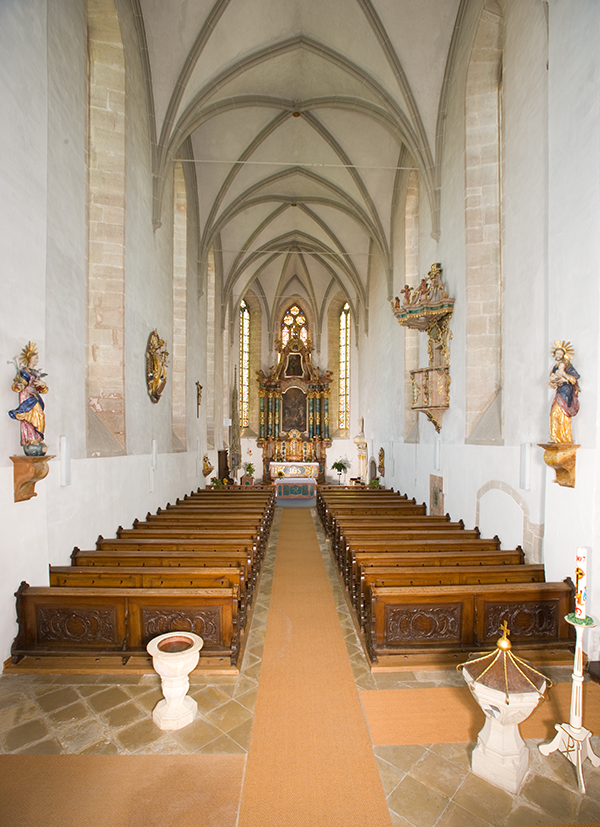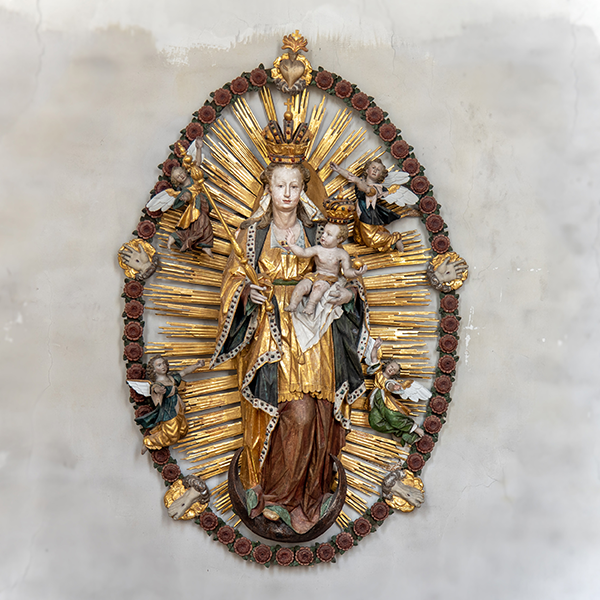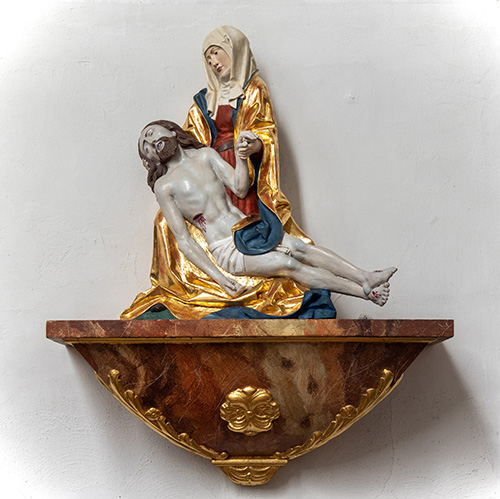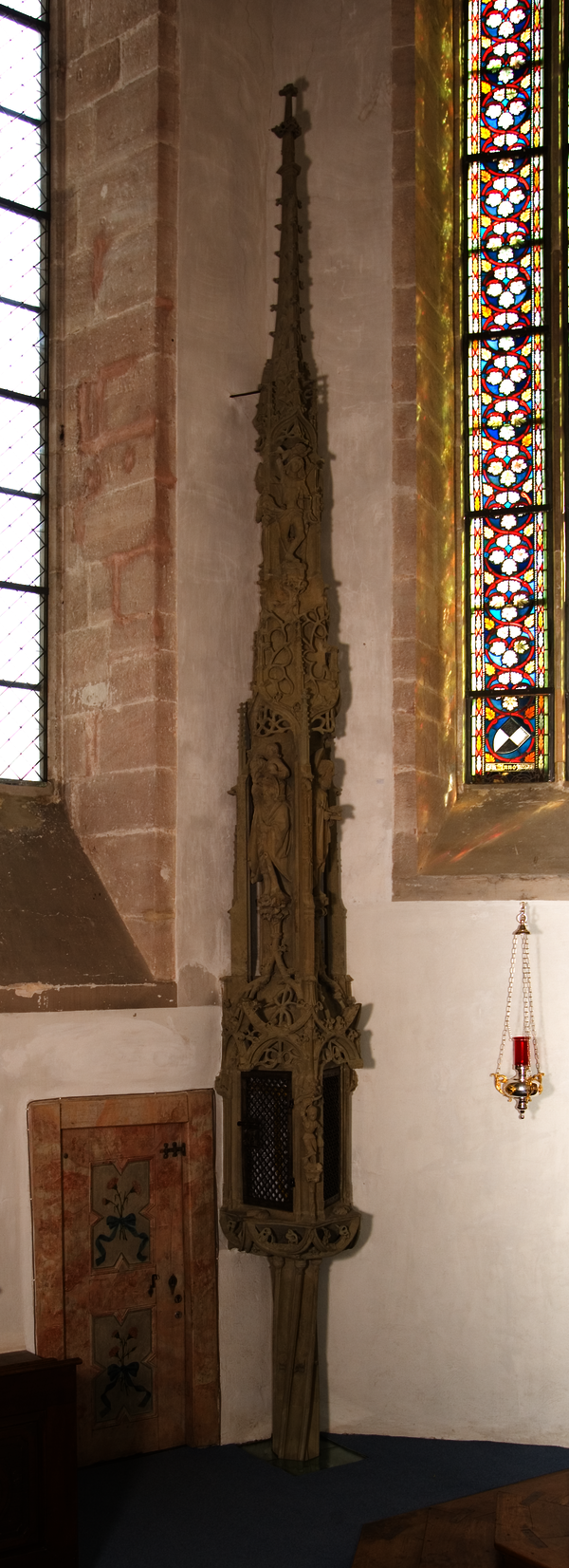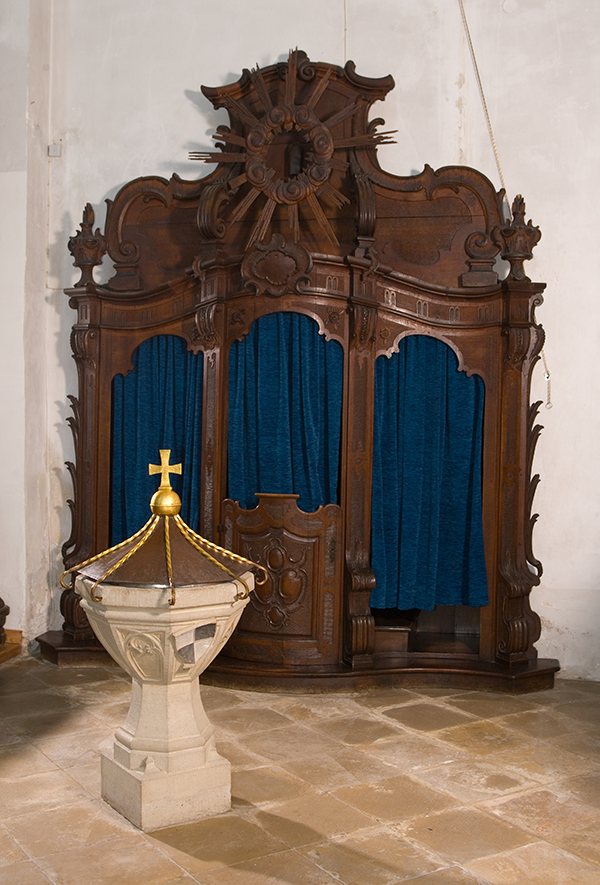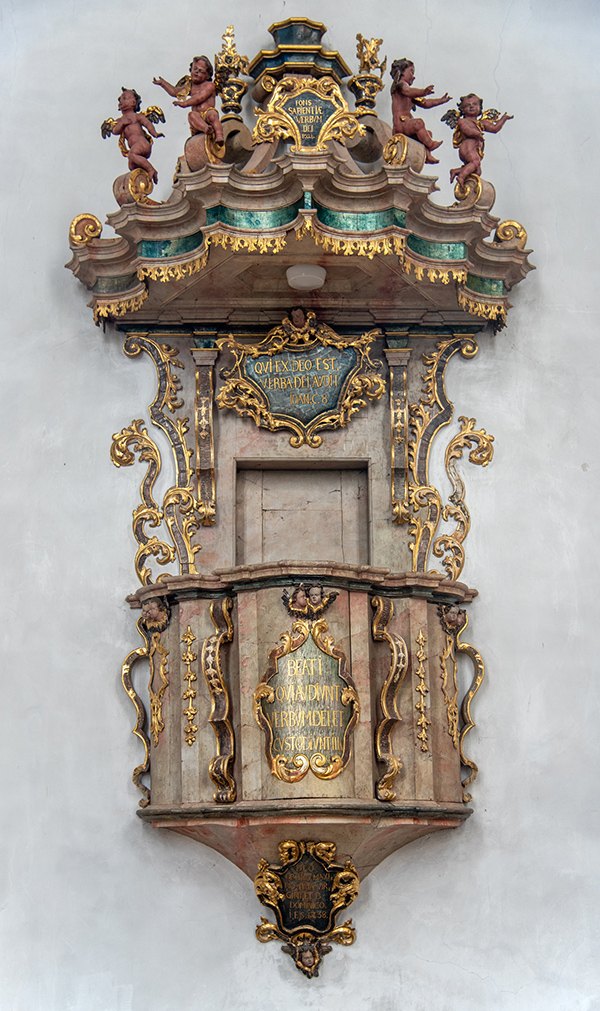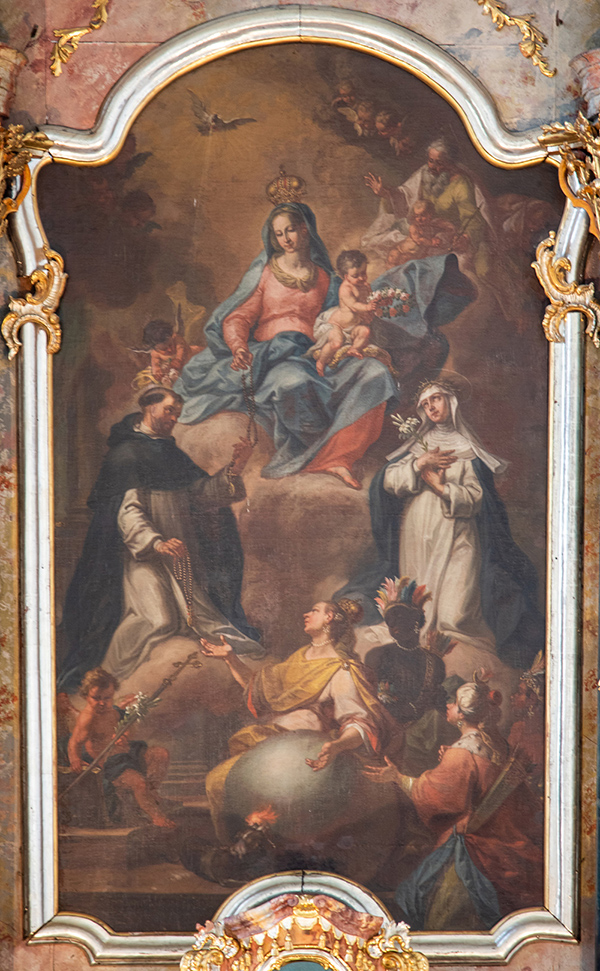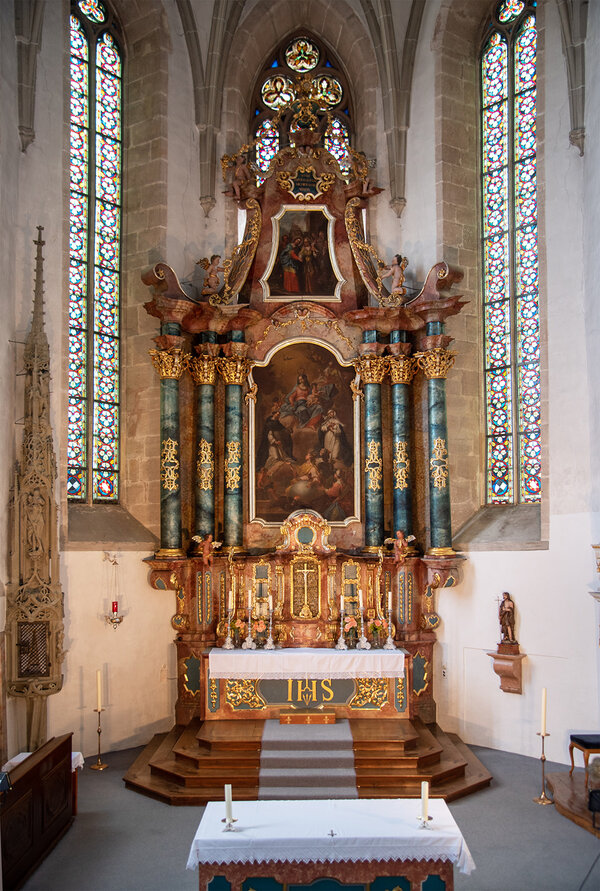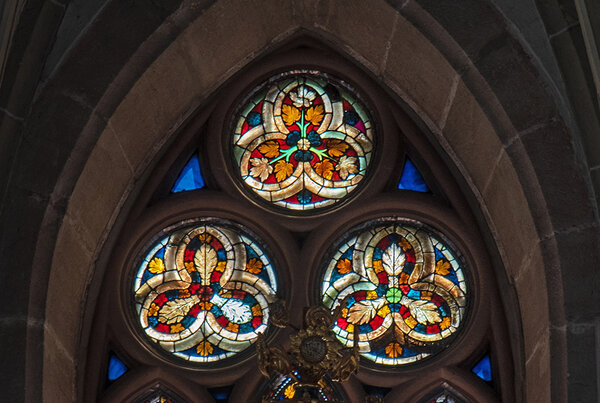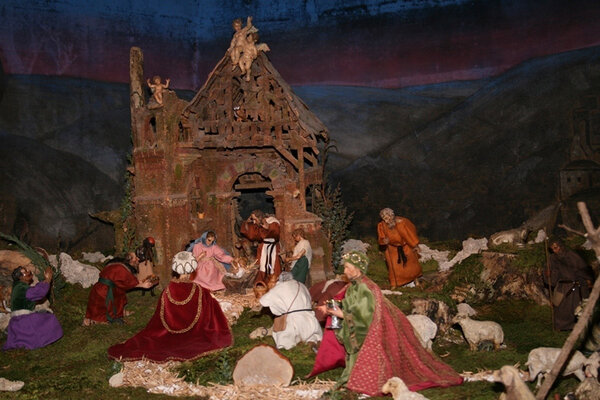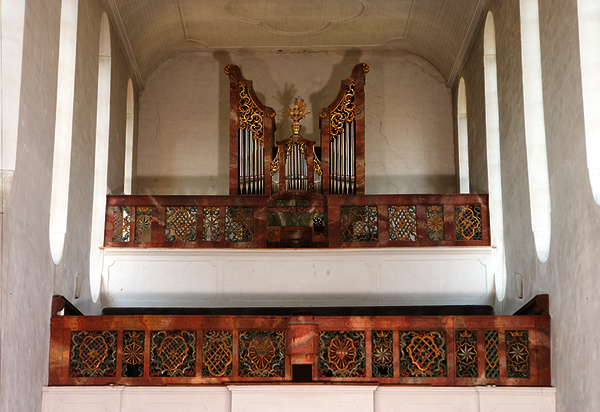The view towards the altar shows the nave with a height of 15 meters and the main altar by Joseph Hartmann from Augsburg from 1744. You will learn more about the altar as well as other elements of the interior in the following:
The work of woodcarver Zachäus Taubenschmid from Hechingen from around 1600 shows Mary with the Christ Child, surrounded by a mandorla. The stylized rosary with the stigmata of Christ was added later.
Other notable pieces are a Pietà on the north wall and a late Gothic Madonna on a crescent. Both sculptures were probably created towards the end of the 15th century.
The tabernacle was created around 1500 by the stonemason Peter of Koblenz (born around 1440 in Koblenz - died 1501 in Urach). The St. Christopher fountain in Bad Urach was also made by him.
The altarpiece shows the handing over of Mary's rosary to St. Dominic, who passes it on to the 4 continents known at that time (from left to right: Europe - America - Asia - Africa). It is listed in a research paper of the University of Vienna about continental allegories.
Behind the high altar is the tripartite stained-glass window from the 13th century. The panes are still original.
The remaining glass panes were removed in 1823 and re-installed in various castles and buildings - for example in the St. Michael's Chapel on the Hohenzollern Castle.
Behind the inconspicuous door on the left side near the tabernacle a nativity scene is set up during the Christmas season. It was created by Sebastian Osterrieder (*1864 - 1932), an artist from Abensberg whose works are also exhibited in Munich's National Museum.

